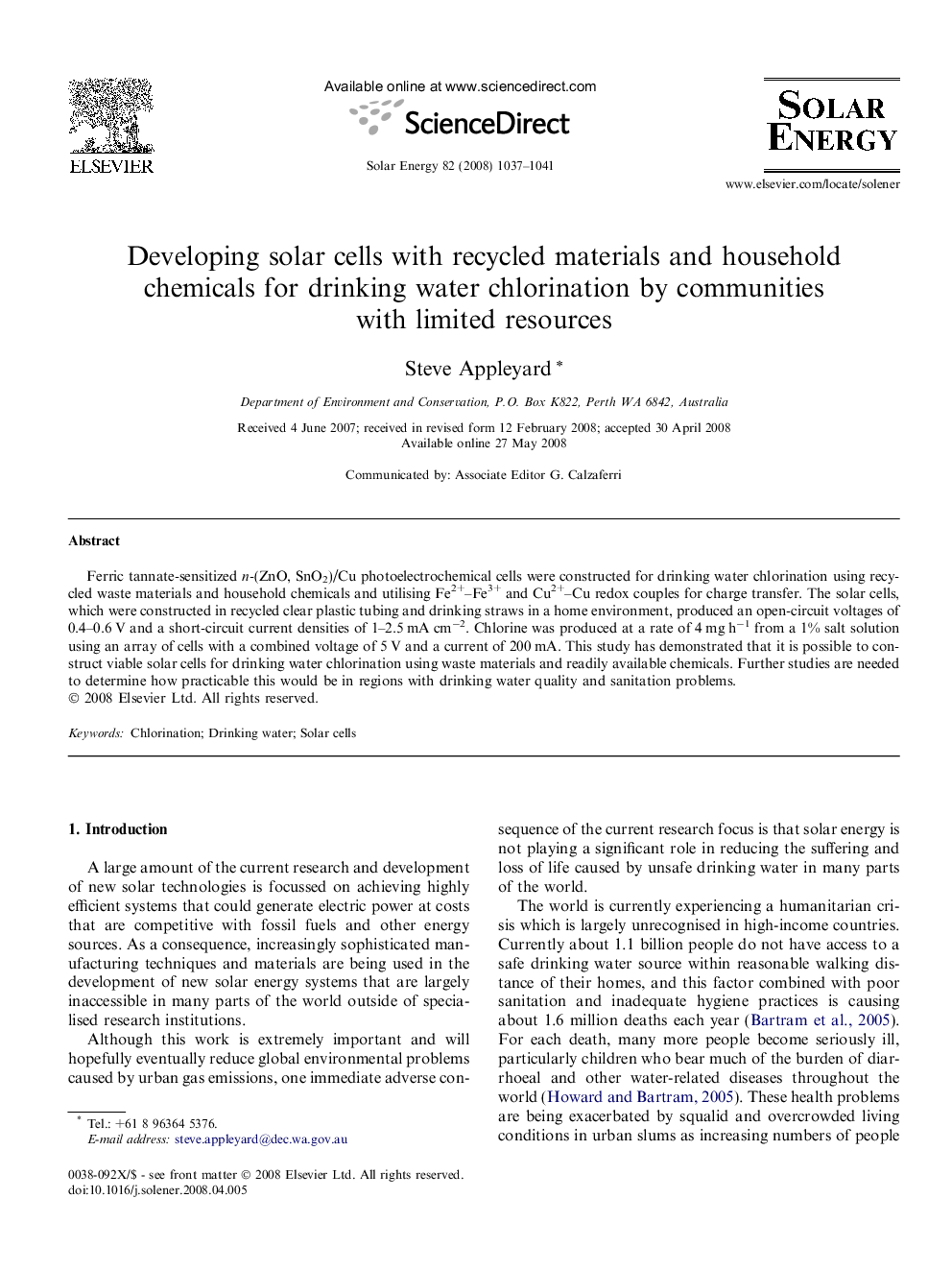| Article ID | Journal | Published Year | Pages | File Type |
|---|---|---|---|---|
| 1551902 | Solar Energy | 2008 | 5 Pages |
Ferric tannate-sensitized n-(ZnO, SnO2)/Cu photoelectrochemical cells were constructed for drinking water chlorination using recycled waste materials and household chemicals and utilising Fe2+–Fe3+ and Cu2+–Cu redox couples for charge transfer. The solar cells, which were constructed in recycled clear plastic tubing and drinking straws in a home environment, produced an open-circuit voltages of 0.4–0.6 V and a short-circuit current densities of 1–2.5 mA cm−2. Chlorine was produced at a rate of 4 mg h−1 from a 1% salt solution using an array of cells with a combined voltage of 5 V and a current of 200 mA. This study has demonstrated that it is possible to construct viable solar cells for drinking water chlorination using waste materials and readily available chemicals. Further studies are needed to determine how practicable this would be in regions with drinking water quality and sanitation problems.
